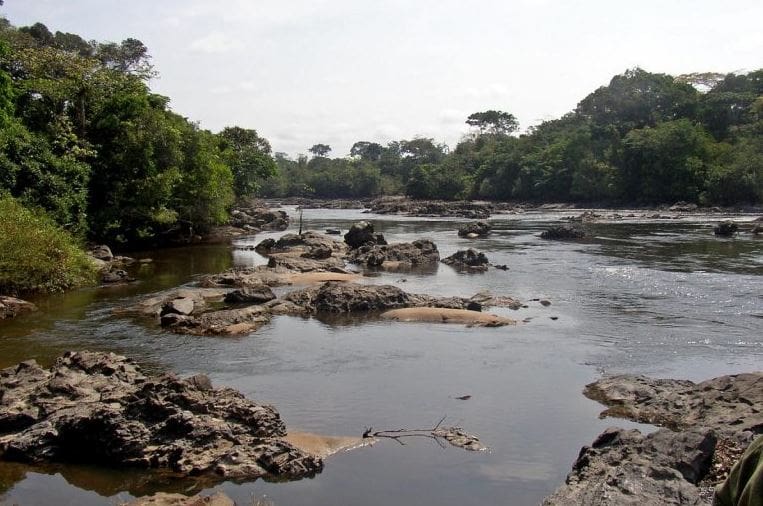The First Global Congress of Indigenous Peoples and Local Communities from the Forest Basins brings together forest guardians from the Amazon, Congo, Borneo-Mekong-Southeast Asia, and Mesoamerica. These territories, long safeguarded by Indigenous Peoples and local communities, are essential to the Earth’s biodiversity and carbon balance—providing powerful solutions to the climate crisis.
The fires in Similipal National Park and Tiger Reserve have brought to the fore the tug of war between the forest department and the community for biosphere ownership.
Thailand’s legal frameworks for biodiversity conservation and international climate commitments omit the important role that its Indigenous Peoples play as stewards of the environment.
The GLF summit presented the first draft of a ‘gold standard’ on rights, which will define the principles of secure and proper rights to be applied by public, private and non-profit actors in the implementation of policies, business and initiatives in global landscape. “We wish to establish that the respect of our rights is non-negotiable,” said Joan Carlin of the Indigenous Peoples Major Group for Sustainable Development (IPMG), which leads the initiative together with the Rights and Resources Initiative (RRI).
The Doi Tung Development Project, run by the Mae Fah Luang Foundation under Thai royal patronage, is held up by the United Nations as a model for ending narcotic drug cultivation and improving the lives of indigenous communities. Yet in other parts of the country, indigenous people continue to live in poverty and face challenges in accessing land, livelihoods and citizenship, according to tribal rights groups.
Washington DC-based Rights and Resources Initiative has done a wonderful job of collating dozens of studies that show that indigenous people and other forest-dependent groups have been effective stewards of forests and biodiversity in hundreds of sites throughout the world.
Indigenous peoples and local communities legally own only about 15 percent of forests worldwide, according to a 2018 analysis by the Rights and Resources Initiative, a global land rights coalition.
Launched by the Rights and Resources Initiative (RRI), the International Land and Forest Tenure Facility is the first and only multi-stakeholder financial mechanism focused on securing land and forest rights for indigenous peoples and local communities. It provides grants to indigenous organisations to help scale up implementation of land and forest tenure reform policies as well as to map and register their lands.
“Those new conservation and climate bodies need to incorporate indigenous peoples. $1 billion was given to preserve 30% by 2030, however we would have achieved this 30% if we simply implemented indigenous rights across 7 countries,” said Andy White, Coordinator of Rights and Resources Initiatives (RRI).
The RRI is a global network advocating for the land and forest rights of Indigenous peoples and local communities. As the RRI’s coordinator, Andy White travels the world, meeting with Indigenous and community leaders, governments and civil society organizations to discuss how local communities’ rights to the forest can be advanced. Here, as part of an ongoing review of community rights to forested lands and key conditions for success led by Tropenbos International, he talks about recent progress and challenges and the role that civil society organizations can play to help people claim their rights as a step toward locally-led sustainable development.
“They started the project by taking away communities’ land without their consent, using intimidation and all kinds of misplaced government power to evict them from their own customary land,” said Kipalu, who now works for the Rights and Resources Initiative in Washington, D.C.
Referring to the estimates of Rights and Resources Initiative (RRI) CSD says the actual potential forest land going to be recognized under FRA, 2006 would be more than 85.6 million acres (excluding five north-eastern states and J&K) and more than 200 million Scheduled Tribes (STs) and Other Traditional Forest Dwellers (OTFDs) in over 170,000 villages in the country are estimated to get IFR rights under FRA.
A new community forest bill that aims to give Thai villagers more say in managing natural resources is too limited in its scope and risks further marginalising those living outside areas covered by the act, land campaigners said on Thursday.
Recognition of the role local and indigenous communities have in stewarding forests continued to grow in 2018. More reports and studies argued that securing indigenous peoples’ land rights is one of the most cost-effective mechanisms for protecting forests and mitigating climate change. Accordingly, philanthropic attention and dollars shifted toward such efforts, including a pledge by group of 17 philanthropic foundations at the Global Climate Action Summit to support recognition of indigenous peoples’ and traditional communities’ collective land rights and resource management as part of their land-based climate change mitigation programs. A study co-authored by UN Special Rapporteur on the rights of indigenous peoples and the Rights and Resources Initiative (RRI) even put a dollar figure on the labor and cash indigenous peoples invest in forest conservation efforts, estimating the annual contributions of such “Forest Guardians” at $1.7 billion.
Overall, these approaches, which are framed as human rights issues alongside environmental issues, have a drastic impact on the globe’s future. In September, The Rights and Resources Initiative (RRI) published a study that found that “legally recognized indigenous and community forests tend to store more carbon and experience lower rates of deforestation than other forests.” RRI’s findings reinforce the view that locally managed forests, whether it is indigenous lands or communal lands, help connect the health of nature with the health of people and ultimately the health of our collective future.
Indigenous people in Ecuador say their territorial rights are being systematically violated, according to a top United Nations official. Victoria Tauli-Corpuz, the U.N.’s special rapporteur on the rights of indigenous peoples, is urging the Ecuadoran government to form a “truly plurinational and multicultural society” in accordance with its constitution and international law.
The Chao Lay, or people of the sea, have lived on the shores of Thailand and Myanmar for generations, fishing and foraging. But the community may be facing its greatest threat yet as marine conservation efforts limit their traditional fishing grounds, and a tourism boom pits them against developers keen on the patch of land that their boats, homes and shrines sit on.
A recent Rights and Resources report provides strong evidence on the importance of recognizing and protecting indigenous rights towards mitigating forest-based emissions and curbing global warming. As a Ph.D. student coordinating the third round of data collection of CIFOR’s Global Comparative Study on REDD+ in Ucayali, Peru, I was pleased to find an on the ground example of why this is important and how tenure security can help achieve the objective of REDD+.
Around 2011 or 2012, indigenous villagers outside Manu National Park, an internationally renowned biodiversity hotspot in southwestern Peru, noticed that bananas were mysteriously disappearing from the trees that ringed their huts. At the same time, they found that their huts were being ransacked while they were out. They only understood what was happening when they finally caught glimpses of their rarely seen neighbors, uncontacted Mashco Piro tribespeople who lived deep within the park.
Governments maintain control over more than two-thirds of global forest area, much of which is claimed by local communities, RRI said in a recent report. In Indonesia, indigenous people are estimated to have ownership rights over 40 million hectares of customary forest and other land.
Around 1 in 9 people in the world — 821 million — are undernourished. After a prolonged decline, the Food and Agriculture Organization of the United Nations found that world hunger is rising once again.
The world’s food systems need to be transformed to curb this trend. Legally recognized and protected land rights for indigenous peoples and local communities in the developing world are a key part of revitalizing the world’s food systems. In particular, the rights of rural and indigenous women to support diverse, local agricultural production require urgent attention.
A number of experts now believe that reclaiming land for indigenous people is the best way to protect the Earth’s forests. According to the Rights and Resources Initiative, an N.G.O. that advocates for native land rights, legally recognized indigenous forests “tend to store more carbon and experience lower rates of deforestation.” But in a recent report supported by data from the Woods Hole Research Center, the initiative found that while indigenous communities currently manage forests and soil containing nearly three hundred billion metric tons of carbon—thirty-three times more than global energy-related emissions in 2017—they lacked legal titles to the sites of at least a third of that carbon total.” This puts “them, their forests and the carbon they store at great risk,” Alain Frechette, one of the authors of the initiative’s report, said.
A web-based application that monitors the impact of successful forest-rights claims can help rural communities manage resources better and improve their livelihoods, according to analysts.
Indigenous peoples and local communities in 64 tropical and subtropical countries occupy land storing nearly 300 billion metric tons of carbon above- and below-ground. That’s equal to 33 years of pollution, given a 2017 baseline. Where indigenous peoples live, high-tech mapping indicates, deforestation rates are dramatically lower, especially in the relatively few places where they have land ownership rights.












